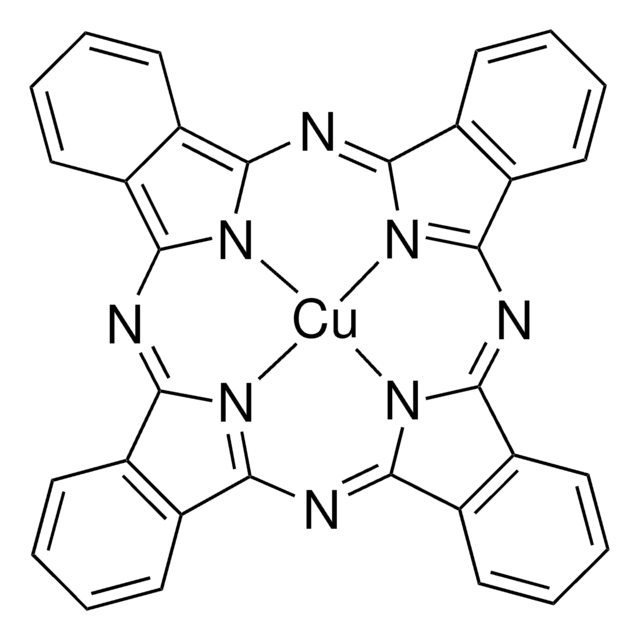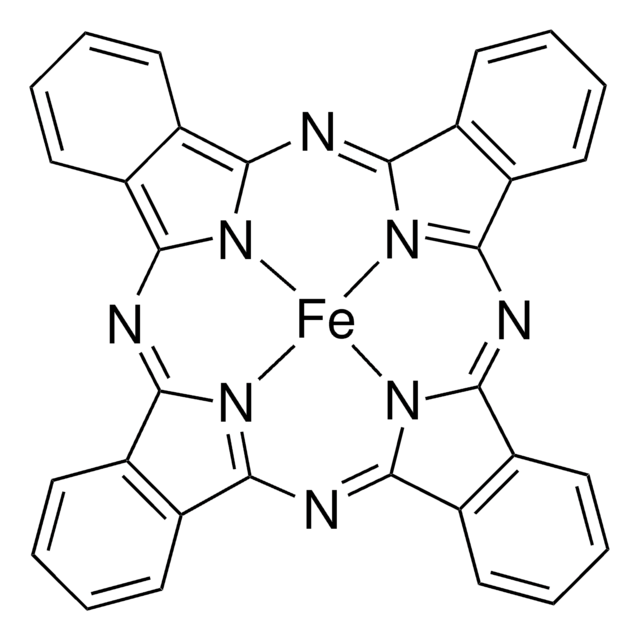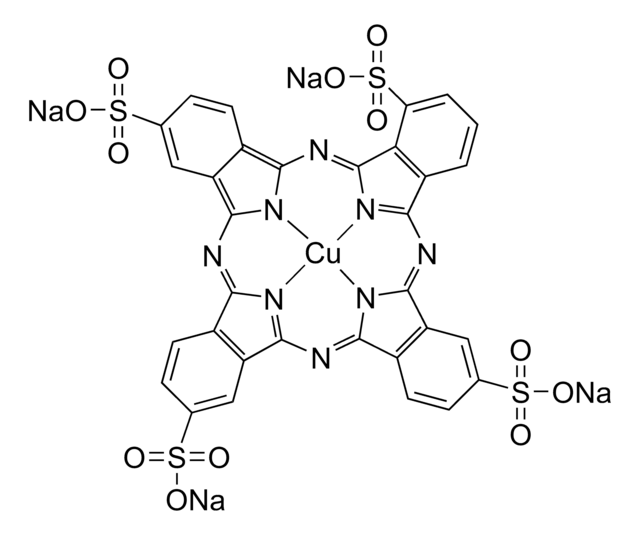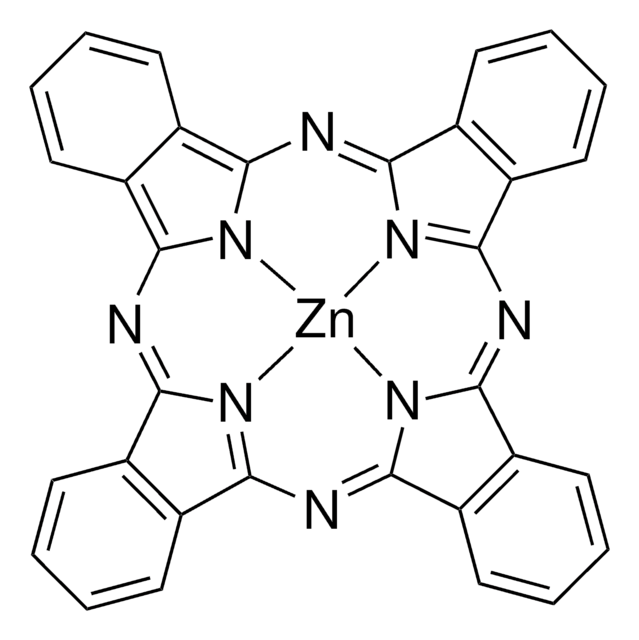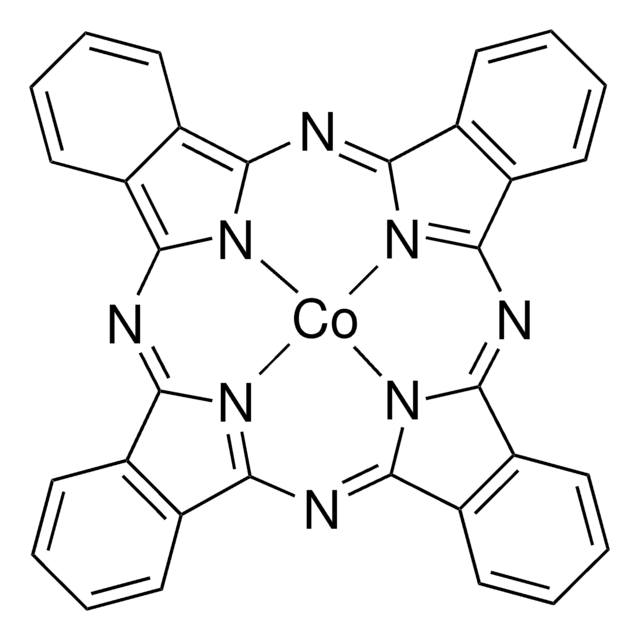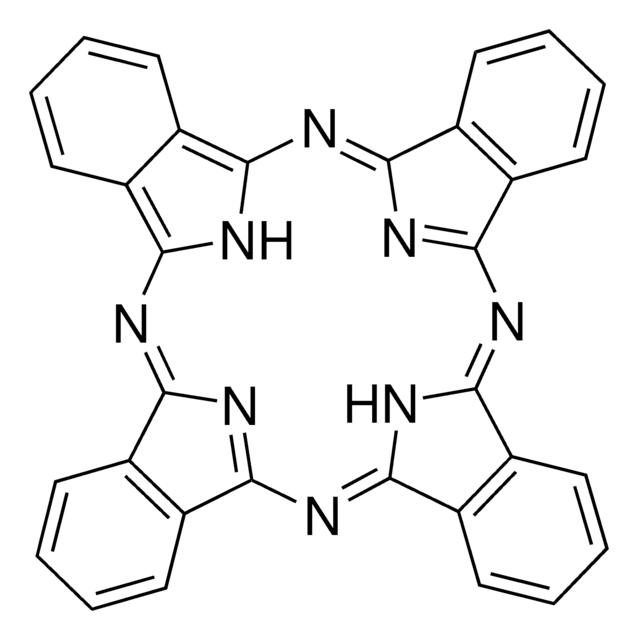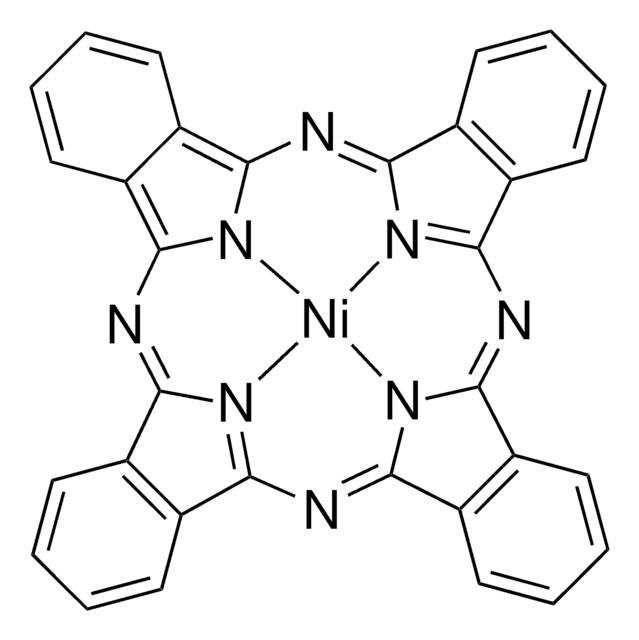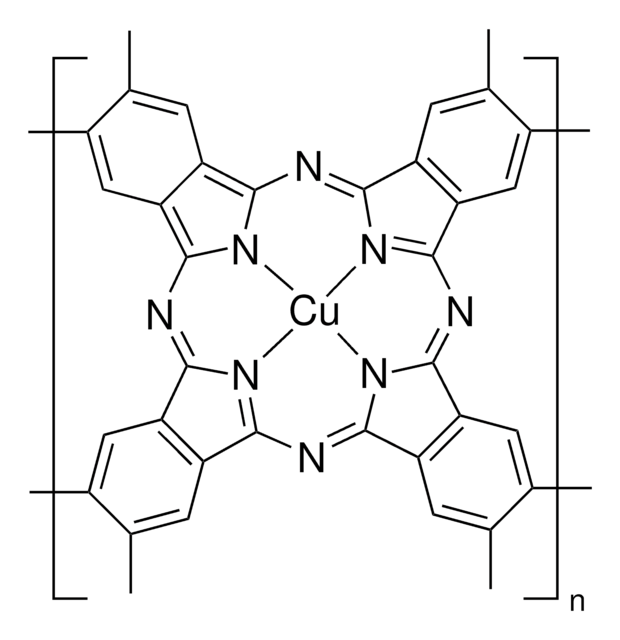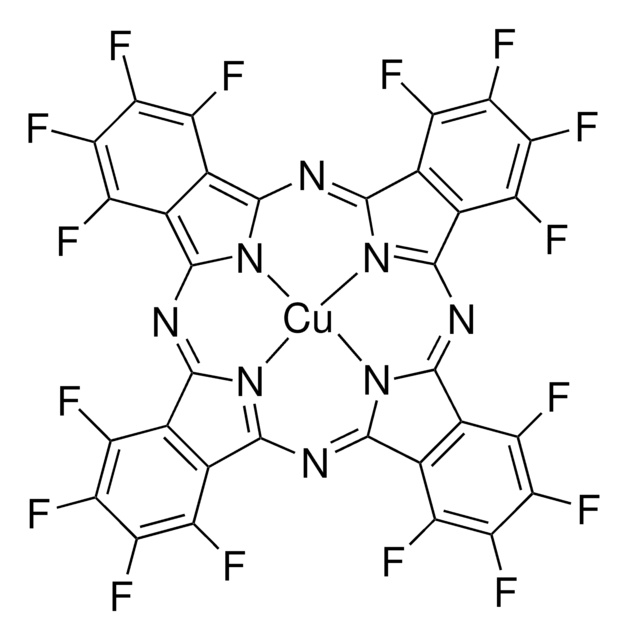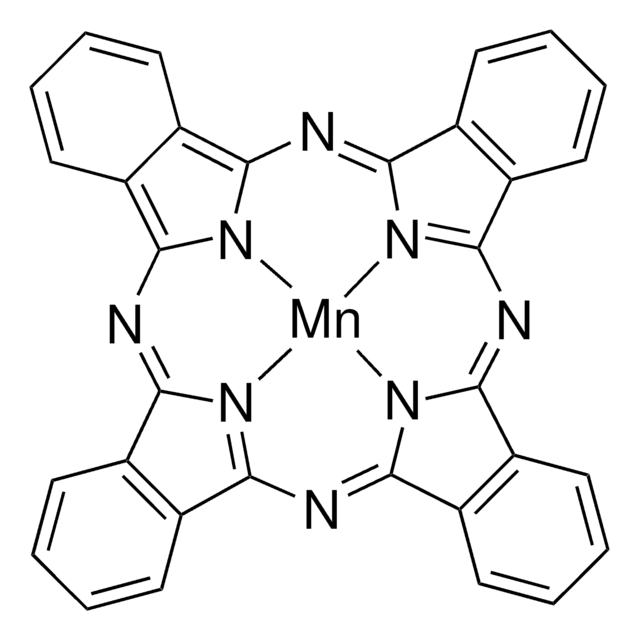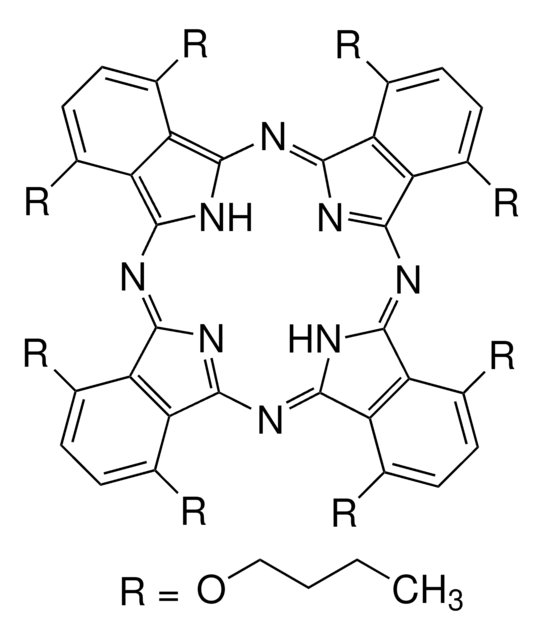546682
Copper(II) phthalocyanine
Dye content >99 %
Synonym(s):
CuPc, Phthalocyanine blue, Pigment Blue 15
About This Item
Recommended Products
composition
Dye content, >99%
Quality Level
λmax
678 nm
OLED Device Performance
ITO/CuPc/NPD/Alq3/C60/Mg:Ag
ITO/CuPc/NPD/Alq3/LiF/Al
ITO/CuPc/NPD/CBP:FIrpic (6%)/BAlq3/LiF/Al
OPV Device Performance
ITO/CuPc/PTCDA/In
ITO/PEDOT:PSS/CuPc/C60/BCP/Al
SMILES string
c1ccc2c(c1)C3=NC4=[N@@H]5C(=Nc6n7c(N=C8c9ccccc9C%10=[N@@H]8[Cu]57N3C2=N%10)c%11ccccc6%11)c%12ccccc4%12
InChI
1S/C32H16N8.Cu/c1-2-10-18-17(9-1)25-33-26(18)38-28-21-13-5-6-14-22(21)30(35-28)40-32-24-16-8-7-15-23(24)31(36-32)39-29-20-12-4-3-11-19(20)27(34-29)37-25;/h1-16H;/q-2;+2
InChI key
XCJYREBRNVKWGJ-UHFFFAOYSA-N
Looking for similar products? Visit Product Comparison Guide
Related Categories
Application
- A facile molecularly engineered copper (II) phthalocyanine as hole transport material for planar perovskite solar cells with enhanced performance and stability: This study introduces a modified copper(II) phthalocyanine that enhances the performance and stability of perovskite solar cells (Yang et al., 2017).
- Dopant-free methoxy substituted copper (II) phthalocyanine for highly efficient and stable perovskite solar cells: Discusses the synthesis and application of a methoxy-substituted copper(II) phthalocyanine, improving the efficiency and stability of perovskite solar cells (Ding et al., 2020).
- Highly efficient dye-sensitized solar cells based on metal-free and copper (II) phthalocyanine bearing 2-phenylphenoxy moiety: Examines novel phthalocyanines for use in dye-sensitized solar cells, focusing on their synthesis and photophysical properties (Ali et al., 2016).
- Operando HERFD-XANES and surface sensitive Delta mu analyses identify the structural evolution of copper (II) phthalocyanine for electroreduction of CO2: This research uses advanced spectroscopic techniques to explore the structural changes in copper(II) phthalocyanine during CO2 electroreduction (Mei et al., 2022).
- New dye sensitized photocatalysts: Copper (II)-phthalocyanine/TiO2 nanocomposite for water remediation: Studies a copper(II) phthalocyanine-TiO2 composite as a photocatalyst for water remediation, showing its effectiveness in degrading pollutants under light irradiation (Albay et al., 2016).
Storage Class Code
11 - Combustible Solids
WGK
nwg
Flash Point(F)
Not applicable
Flash Point(C)
Not applicable
Personal Protective Equipment
Regulatory Listings
Regulatory Listings are mainly provided for chemical products. Only limited information can be provided here for non-chemical products. No entry means none of the components are listed. It is the user’s obligation to ensure the safe and legal use of the product.
ISHL Indicated Name
Substances Subject to be Indicated Names
ISHL Notified Names
Substances Subject to be Notified Names
JAN Code
546682-VAR:
546682-BULK:
546682-200MG:4548173944098
546682-2G:4548173944104
Choose from one of the most recent versions:
Already Own This Product?
Find documentation for the products that you have recently purchased in the Document Library.
Customers Also Viewed
Articles
The conductivity of organic semiconductors can be increased, and the barriers to charge-carrier injection from other materials can be reduced, by the use of highly reducing or oxidizing species to n- or p-dope, respectively, the semiconductor.
Professor Shinar (Iowa State University, USA) summarizes the developments of a variety of sensor configurations based on organic and hybrid electronics, as low-cost, disposable, non-invasive, wearable bioelectronics for healthcare.
While dye sensitization as the basis for color photography has been accepted for a very long time,1 attempts to use this principle for the conversion of solar light to electricity generally had resulted only in very low photocurrents, below 100 nA/cm2.2
Our team of scientists has experience in all areas of research including Life Science, Material Science, Chemical Synthesis, Chromatography, Analytical and many others.
Contact Technical Service